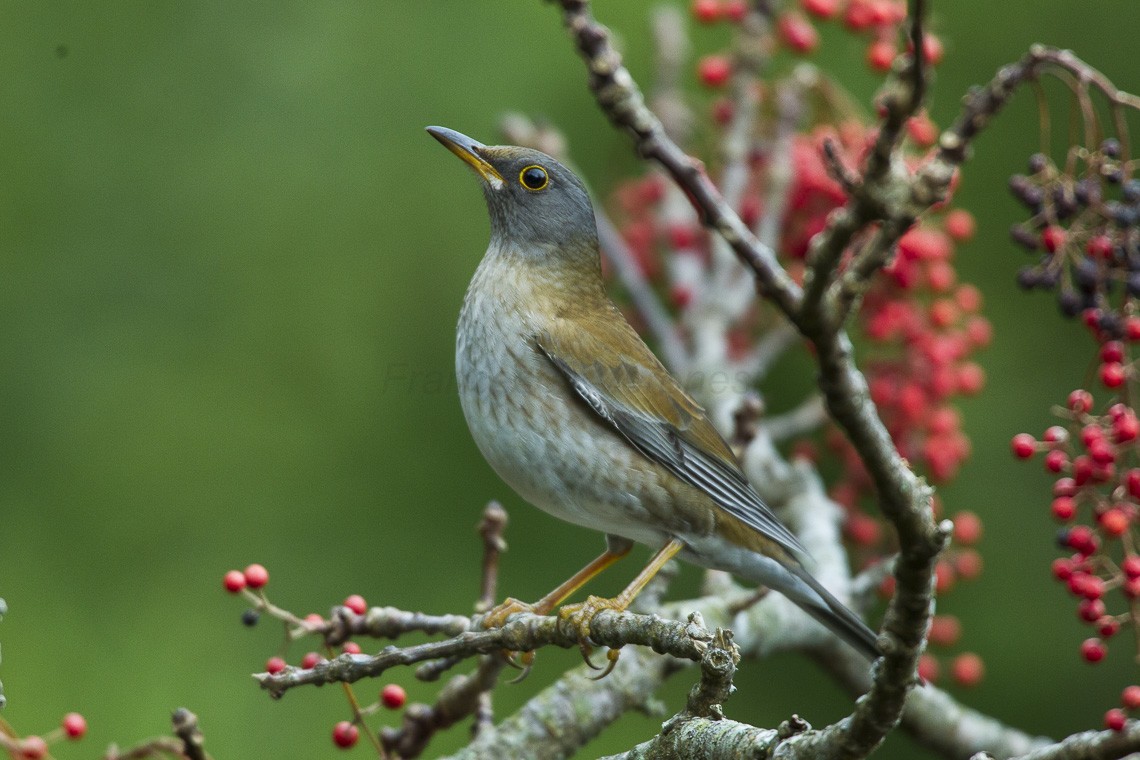Pale Thrush
A species of True thrushes Scientific name : Turdus pallidus Genus : True thrushes
Pale Thrush, A species of True thrushes
Botanical name: Turdus pallidus
Genus: True thrushes
Content
Description General Info
 Photo By Francesco Veronesi , used under CC-BY-SA-2.0 /Cropped and compressed from original
Photo By Francesco Veronesi , used under CC-BY-SA-2.0 /Cropped and compressed from original Description
The pale thrush (Turdus pallidus) is a passerine bird of the eastern Palearctic belonging to the genus Turdus in the thrush family Turdidae. It is closely related to the eye-browed thrush and grey-backed thrush. It is 23 cm long. The feet are pale pinkish-brown and the bill is grey above and yellow below. The male is brown above with a blue-grey head and throat. The underparts are pale brown, darker on the flanks and whitish on the belly and undertail-coverts. The flight feathers of the wing are dark grey and the underwing-coverts are grey or white. The tail is dark grey with white tips to the outer feathers. The female is similar to the male but duller with a browner head and pale throat. It has harsh chuck-chuck and see-ip calls and a bubbling alarm call. It breeds in south-east Siberia, north-east China and Korea and may breed in Japan, especially on Tsushima Island. It is largely migratory, wintering in southern and central Japan, South Korea and southern China, occasionally reaching as far as Yunnan, Taiwan and the Philippines. It inhabits forests, scrub, gardens and parks. It is a shy bird which keeps to cover. It can occur in large flocks on migration, particularly where there are berries. 
Size
23 cm
Colors
Brown
Gray
White
Nest Placement
Tree
Feeding Habits
Pale Thrush primarily feasts on insects, especially beetles, along with spiders and worms. Additionally, pale Thrush consumes fruits, berries, and seeds, showcasing an omnivorous diet. While foraging, pale Thrush applies adept hunting techniques, with no unique dietary adaptations of note.
Habitat
Pale Thrush inhabits montane and submontane zones, preferring dense cover in environments like pine, deciduous, and spruce-fir woodlands. They show adaptability by residing in thickets and also thrive in urban areas like parks and gardens. During migration, they form large gatherings in berry-rich locales. In winter, pale Thrush extends to lowland forests and open woodlands, showcasing versatile habitat preferences.
Dite type
Omnivorous
General Info
Feeding Habits
Bird food type
Species Status
Not globally threatened.
Scientific Classification
Phylum
Chordates Class
Birds Order
Perching birds Family
Thrushes Genus
True thrushes Species
Pale Thrush